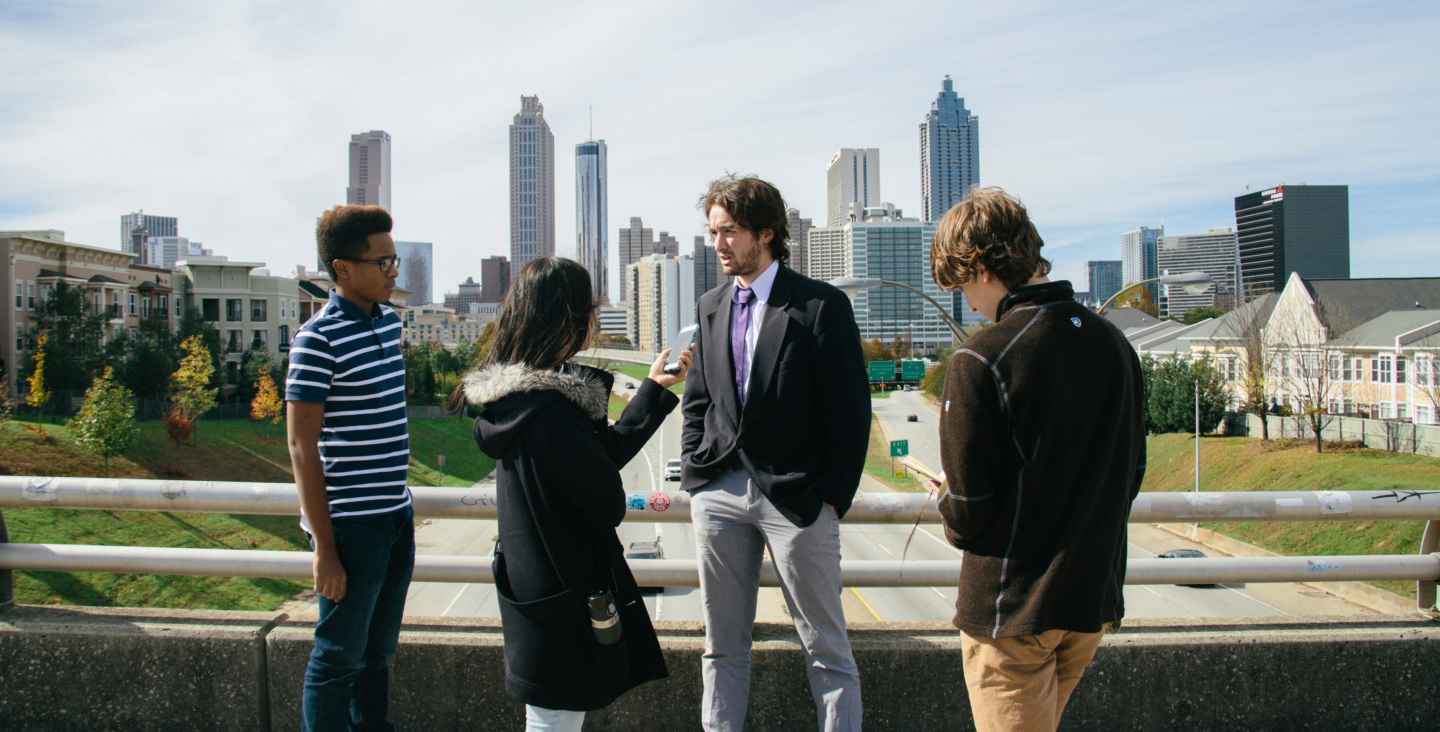Essential Principles of Community-Engaged Learning – Part I

We know that Community-Engaged Learning (CEL) experiences during the high school years have the potential to profoundly affect students and transform traditional secondary education. With such ambitious goals, it should come as no surprise that doing Community-Engaged Learning right is no easy task. CEL experiences can range from year-long internships, to extended projects focused on solving a local problem, to one-day excursions to work with a community partner. But no matter their scope, great Community-Engaged Learning experiences share some common basic principles, which practitioners can use to design, implement, and evaluate those experiences.
In short, those principles state that Community-Engaged Learning experiences should:
- Center itself around an essential question for inquiry which engages a contemporary issue or need in a student community.
- Connect students to adults doing work related to the project’s essential question.
- Use the city (or another community) as a classroom.
- End with a student-produced final product which can be shared with the community at large via exhibition or other presentation.
- Contain a mix of collaborative and individual work.
- Provide opportunities for students to practice skills and/or apply knowledge they have learned within the project or in academic classes.
- Offer ways for students to make meaningful choices within the work.
- Present opportunities for regular reflection so students can discuss progress, learn from decisions/actions and re-adjust as needed.
- Have a clear structure with incremental mileposts.
- Include an evaluation rubric that students and teachers develop collaboratively.
In this article, we’ll take a look at the first of those core principles, the one related to essential questions. As we’ll see, for successful CEL work, this principle isn’t optional, but forms the basis of the learning that students do throughout the project.
Essential Principle #1: Ask an Essential Question
The first essential principle of CEL is that the experience has an essential question for inquiry, which engages a contemporary issue of need. This principle helps students see the relevance of their actions around issues at play in their own communities or in the larger world. It also serves to motivate students to become actors in the world, and to understand their own agency.
The essential question principle acts as the anchor for the entire CEL experience, from ideation and planning through execution and assessment. It should be broad enough to allow students to find their own points of entry into individual experiences, specific enough to ask as a guardrail that keeps both teachers and students from straying too far from their goals, and directive enough to give students a roadmap for their work in the community.
What’s the Point?
One of the most common refrains around high schools, kitchen tables, and wherever teenagers do their schoolwork is “What’s the point?” Having a well-crafted essential question answers that question, by providing students will the big-picture goal of whatever they are working on. Even if students are frustrated with the particular piece of work they are doing as part of a long community-engaged learning experience, having an essential question in their back pockets helps them see why their work today is important in the context of the larger project they’re working on.
A Real World Example
Let’s take a look at a couple of possible essential questions and run them through those parameters. Here’s a possible essential question for a project on immigration: “What factors contribute to successful relocation of new immigrants?” Sound good? Well, this question is certainly broad enough to give students many different entry points into the project, and many different ways to focus their work. But it’s too broad, in that it doesn’t differentiate between different immigrant groups, different socioeconomic conditions, or even different locations. Asking this question with respect to well-educated British immigrants relocating to large U.S. cities would likely lead to very different answers than asking it with respect to undocumented Syrian immigrants relocating to Germany.
What’s a Community?
But from the standpoint of Community-Engaged Learning, the first flaw in this essential question points to a second: a lack of direction. What is the contemporary issue or need addressed by this project? What student community is being addressed? To give students a sense of purpose, educators have to show how the work they’ve designed for students is work that actually matters, to students, in those students’ communities.
That community can be defined as broadly or as narrowly as teachers and students determine is appropriate, but it has to be defined at this early stage of project planning. So at the narrow end, the question could focus on the factors that help immigrants achieve success in the students’ own school. A wider lens might look at a nearby immigrant community, or a variety of immigrant communities in the area. An even broader definition of community might see students studying immigration policy at the state or national level, and measuring the effects in various localities. As we can see, however community is defined, that definition suddenly makes the community-engaged learning experience real for students and teachers alike, and adds to the urgency and focus of the work they do.
Many Revisions
So, how could we revise that earlier essential question to make it a true CEL question? In as many ways as there are teachers and student communities. Here’s one that would be appropriate to Atlanta: “How do family ties, international enclaves, and local non-profits combine to help new immigrants succeed in a rapidly changing Atlanta society?” That sounds like an interesting question, one that will take students out into their community to come up with real world solutions to real world problems. That’s community-engaged learning at its best.
